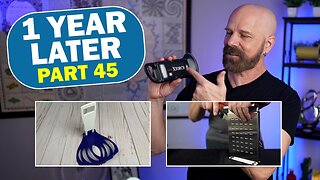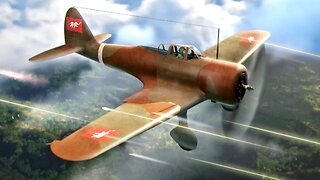Installing Voultar's RGB Mod Kit In A Super Nintendo Jr With S Video For the First Time!
In this video, we install one of Voultar's RGB Mod Kits into a Super NES Jr, along with a Ghosting Capacitor Fix and enable S-Video.
Please note, links to Voultar's mod shop and the equipment used in this video are provided in the pinned post in the comment section.
I've said before that the Super Nintendo is my favorite video game system of all time. Even on the Super Nintendo, however, there are better versions of hardware and mods you can install to make them look even better. Voultar has created some of the best mod chips out there for both the Super Nintendo and the Nintendo 64, and we're going to install the SNES one in the SNES Jr.
What I love about Voultar's mod chip is the fact that it is easy to install and the results are instantly noticeable. He has made several revisions to the Super NES mod chips since I first installed one, making it more compact, more user-friendly, and honestly, I think the results look better now too. See, the original Super NES and Super Famicom both were capable of outputting RGB right from the box, however, Nintendo removed the RGB output from the systems to reduce cost. Thankfully, Voultar's RGB Board makes restoring RGB output for either RGB SCART or HD Retrovision Component Video Cables a snap.
In addition to adding the RGB Mod kit to the system, I also installed Voultar's 1CHIP Ghosting Fix Capacitor Fix. This simply addresses the video issue some systems that experience a ghosting with some video output. This is an easy and inexpensive upgrade that, if you're under the hood to mod your system anyways, you should really do this at the same time.
It took me about 20-minutes to disassemble, install, and reassemble everything inside the system. One of the coolest things about this mod is, once completed, you can’t tell that the system has been modded at all. I was able to perform this mod quickly as well, thanks to my previous experience with Voultar’s RGB mod kits. They are really quite amazing and super user-friendly.
One unique thing about this mod install was the fact that I actually connected the s video. This is something I normally bypass because I use HD Retrovision component video cables. Matthew, however, wanted to have the ability to utilize S-Video. I hooked up an S-Video cable to my RetroTink 2x, and I have to say I was actually really impressed with how sharp it looked.
This particular mod did reveal an issue I didn't know I had, but it cause me to spend lots of money to fix. When I first completed the mod on Matthew's system and fired it up, it worked as expected off camera. When I went to film my close, I wasn't getting any video off of the system, at all. Not component, not composite, not S-Video. I soldered and resoldered, cleaned, reconnected, nothing fixed it. What the issue was lied in the HDMI-Mini to HDMI adapter I was using on my RetroTink 2X. This adapter had become worn and was making an intermittent connection with either the board, the cable, or both. Before I figured this out I ordered another SNES Jr, another mod board, a desoldering iron, and other equipment to try to find out what "I did wrong" on this mod. In the end, I did nothing wrong, I simply had an equipment failure which is thankfully now resolved. And hey, at least I have a desoldering iron now!
I hope Matthew has enjoyed the results of this mod, it was interesting to finally do one with the S-Video hook-up. It was challenging, but I may look at doing this with my own system down the road. If you are looking to have this mod performed, feel free to email me and we can discuss how we can make this happen.
The footage used in this review are used under the Fair Use laws, referenced below:
https://www.law.cornell.edu/uscode/text/17/107
Notwithstanding the provisions of sections 106 and 106A, the fair use of a copyrighted work, including such use by reproduction in copies or phonorecords or by any other means specified by that section, for purposes such as criticism, comment, news reporting, teaching (including multiple copies for classroom use), scholarship, or research, is not an infringement of copyright. In determining whether the use made of a work in any particular case is a fair use the factors to be considered shall include—
(1) the purpose and character of the use, including whether such use is of a commercial nature or is for nonprofit educational purposes;
(2) the nature of the copyrighted work;
(3) the amount and substantiality of the portion used in relation to the copyrighted work as a whole; and
(4) the effect of the use upon the potential market for or value of the copyrighted work.
The fact that a work is unpublished shall not itself bar a finding of fair use if such finding is made upon consideration of all the above factors.
(Pub. L. 94–553, title I, § 101, Oct. 19, 1976, 90 Stat. 2546; Pub. L. 101–650, title VI, § 607, Dec. 1, 1990, 104 Stat. 5132; Pub. L. 102–492, Oct. 24, 1992, 106 Stat. 3145.)
-
 22:12
22:12
RoXolidProductions
3 months agoPlaystation Portal Killer?!? Gamesir G8 Smart Phone Grip Controller
1941 -
 14:48
14:48
Adam Does Movies
16 hours agoIs Star Wars DEAD To You? - Rant!
74.8K79 -
 8:53
8:53
Hack
1 day agoDIY : How To Make a Fast Cooling Freezing AC: Portable Conditioner Full Tutorial - 26 ℃
21.3K14 -
 56:50
56:50
The Spoken Garden Channel
22 hours ago💚 Live | Repot or Not? Signs of Unhappy Container Plants 😮
27.4K2 -
 21:37
21:37
History With Kayleigh
1 day agoLost Underwater City In India Rewrites History Of Civilisation?
22.3K17 -
 20:22
20:22
Freakin' Reviews
18 hours ago10 Product Review Updates, 1 Year Later! (Update 45)
23.5K2 -
 24:37
24:37
Producer Michael
21 hours agoI BOUGHT SOME WILD DESIGNER SNEAKERS!
20.5K -
 20:00
20:00
Yarnhub
1 day agoThai Fighters vs USA
13.6K1 -
 9:28
9:28
MichaelBisping
21 hours agoBISPING: "Conor McGregor Looks REALLY SHARP!" | DROPS SPARRING PARTNER | TRAINING FOOTAGE BREAKDOWN
29K34 -
 15:56
15:56
Melonie Mac
17 hours agoXbox Showcase Uglifies the Women
55.3K130